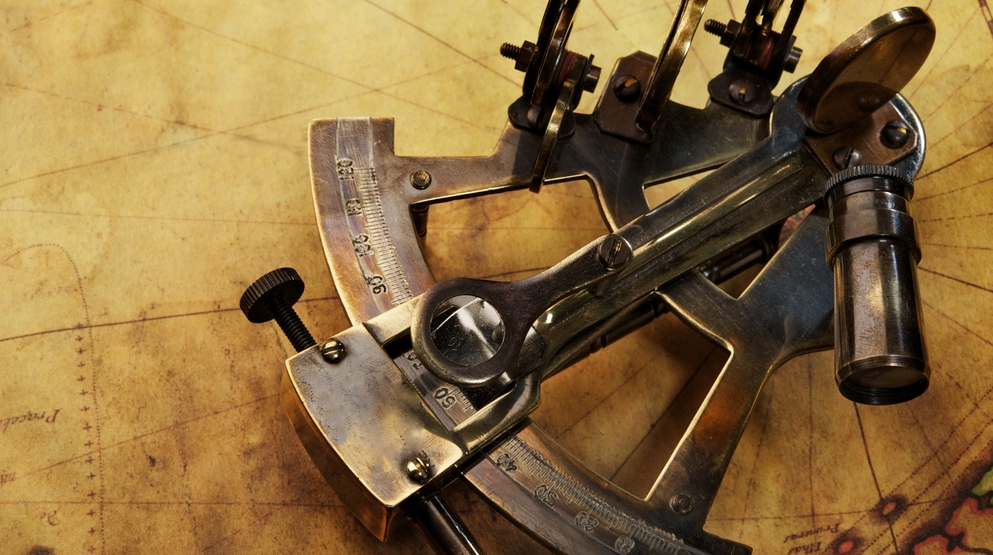
The sextant has been a precise, practical and pivotal piece of nautical navigation since the eighteenth century, helping sailors to determine the angle between two objects and measure the altitude of celestial bodies.
Derived from the Latin word for "one sixth" - owing to the shape of the instruments arc which is made up of one sixth of a circle - sextants can be used to measure the distance between the moon and other celestial bodies to determine Greenwich Mean Time (GMT) without the use of any electrical power. Unlike modern GPS systems, a sextant always has your back while you're out at sea, and that's why they still serve as a significant navigational tool onboard ships to this day.
Made in 1759 by John Bird, one of the most famous craftsman of mathematical instruments - early sextant designs were initially constructed from weighty mahogany and ivory materials before being refined and improved using lighter woods and subsequently fine brass in the nineteenth century.
In modern times, sextants have been streamlined further with the use of light, ergonomic metals and plastics. This ensures that you get a precise navigational reading paired with a sleek, high performance feel at the same time. These beautifully constructed navigational pieces have adapted perfectly with the times and incorporated various changes to ensure they remain as vital as ever.
In our latest blog, we'll explore the differences between plastic and metal sextants, helping you to make an informed decision on your next purchase, while illuminating the key benefits to owning a modern sextant. We'll also provide a glimpse into our very own range of handpicked instruments at Sea Chest.
Should I Buy A Plastic Sextant Or A Metal Sextant?
For those in the market for a new sextant, the price will be a significant aspect as these instruments can range anywhere from £250 to £3000. Therefore, novice navigators just starting out or seasoned sea-dwellers in search of a quick replacement will likely need to be looking primarily at a durable plastic sextant.
Plastic sextants are lightweight and more practical to carry and deploy while you're on your boat. They're also far less cumbersome, weighty and bulky for those looking to learn and develop their sextant skills. If you opt for a high quality plastic sextant, you'll also find that you're not actually compromising on much in the way of functional quality. There are many plastic sextants out there that are made from moulded, high-impact plastics that are weather resistant, durable, break-resistant and resilient to corrosion. They're also very easy to hold and use as well.
The Davis Mark 15 High-Impact Plastic Sextant fits the bill perfectly thanks to the precision-machined slow travel gear and worm mechanism, along with an easy-to-read micrometer drum and vernier. The large and easily adjusted mirrors use new instrument-quality glass and a special baked-on salt-spray resistant backing to provide exceptional sight taking at a reasonable price.

Metal sextants have a premium quality construction and are often made from more classically appealing materials for navigational purists and maritime collectors. Typically, metal sextants are more accurate than plastic sextants because of the high quality metal materials used that are less susceptible to the effects of the sun and therefore provide more reliable readings. For this reason, metals sextants are favoured more so by seasoned sailors. Those who collect navigational instruments will also be seduced by the beautiful gleaming finish of a traditional brass sextant, which is far more desirable than the functional construction of plastic sextants. Metal versions will typically be more robust, hardwearing and timeless by design.
The Freiberger (All View) Drum Sextant has a comfortable weight and size with excellent balance thanks to its high quality light metal alloy frame. Both the large horizon and index mirrors have been thoroughly tested for optical flatness and parallelism, while the clamping device and micrometer drum are fully enclosed for protection against dirt and water spray.
